
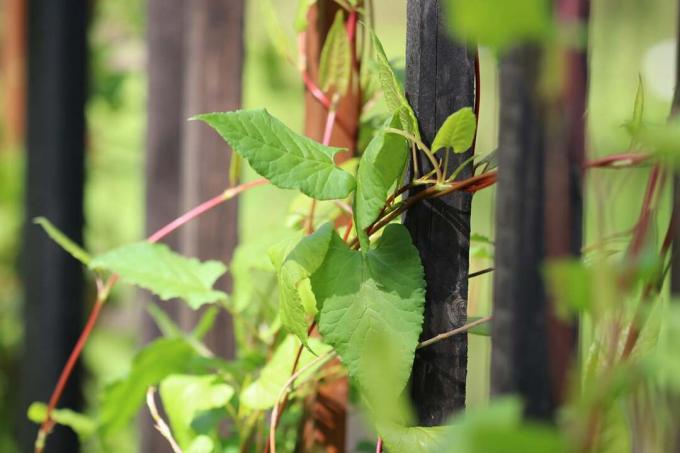
Table of contents
- Characteristics
- soil condition
- heyday
- fertilizing and watering
- Removed
- diseases and pests
- tub cultivation
- plants and time of planting
- Cut
- Location
- hibernate
- multiply
Climbing knotweed is a plant that attracts bees because of its many flowers and therefore belongs in every natural garden. Due to the rapid multiplication, special attention must be paid to care.
Characteristics
- Fallopia aubertii, also Fallopia baldschuanica or Polygonum aubertii
- Knotweed family (Polygonaceae)
- climbing plant
- Growth height up to fifteen meters
- Growth width up to six meters
- twining and sprawling growing
- white, yellow or pink flowers on racemes
- give off a light, pleasant scent
- Flowering period from June to October
- deciduous in autumn
soil condition
The knotweed is quite undemanding when it comes to the substrate. So here the normal garden soil can be used:
- normal, moist soil
- everything from alkaline to acidic is tolerated
- Avoid waterlogging
- Loosen solid ground with gravel or sand
- create drainage in the planting hole
- insert a layer of gravel or stone here
A notice:
Due to its strong growth, the plant is also popularly called "architect's comfort", since it even an unsightly facade is completely covered and the optical errors can no longer be seen here are.
heyday
In the local latitudes, the knotweed blooms continuously from June to October. Therefore, the plant is also a very good pasture for bees. In addition, the sight of the flowers is enchanting throughout the summer:
- white, pink or yellow flowers
- on grapey panicles
- pleasant smell
Tip:
The plant attracts many insects, not just bees, with its flowers and fragrant scent. You should therefore not cultivate them in the immediate vicinity of your seat in the garden or right next to the terrace.
fertilizing and watering
Especially in the first time after planting and during long dry periods, the plant needs a lot of water and should be watered both regularly and very thoroughly.
There is also not much to consider when fertilizing:
- Compost is sufficient
- once a year in spring
- fold in carefully
- a permanent layer of mulch provides further fertilization
- Soil doesn't dry out as quickly
Tip:
Especially in winter, when there are long dry periods, it is important that you water the plant sufficiently. Because even in winter, a plant can dry out. Here, however, you should only water on frost-free days.
Removed
One thing is certain, a creeper is always harder to remove than to plant and care for. Because it can be difficult if the plant that has grown has to be removed from a house wall or wall:
- Roots reach several meters into the ground
- cut back all new shoots radically
- Take trellis from wall
- cut directly to the ground at the base
- dig up the whole ground
- remove all roots
- alternatively use a herbicide
- Be careful when other plants are nearby
- not recommended in a private garden
A notice:
The mechanical removal of the creeper requires a lot of effort, time and work. It takes up to five years to finally destroy the entire plant. Above all, the roots must be removed, otherwise the plant will keep sprouting up from below.
diseases and pests
Diseases are as good as unknown in the knotweed. Brown leaves are usually due to a lack of water. Due to pests can occur:
- aphids
- spider mites in dry seasons
- combat is not necessary

tub cultivation
If you only want to keep the knotweed small, you can also cultivate the plant in a large bucket, such as a large wine barrel. Because if the long roots don't have that much space, the entire plant won't grow that tall either. Nevertheless, there are still a few things to consider here:
- Drainage holes in bottom of vessel
- above this drainage made of gravel or clay balls
- Mix normal garden soil with compost
- insert a small climbing aid
- insert plant
- Press the soil down well
- water well
- in winter, cover the pot with brushwood mats
The knotweed in the pot should be cut back radically on a regular basis, otherwise it will also become too big here. Due to this pruning, repotting into a larger container is usually not necessary. If you also fertilize with compost regularly in spring, the plant does not need fresh soil.
plants and time of planting
Suitable planting times are spring or autumn. If container goods of the plant, which is very popular with bees, were purchased commercially, then these can also be planted all year round. However, you should make sure that the ground is frost-free:
- Planting hole twice as big as root ball
- if drainage is applied, a little deeper
- keep your distance when there are several plants
- at least 1.50 meters
- a distance of three meters is better
- attach climbing aids at the same time
- Use knotweed
- fill in prepared soil
- Lightly press
- water well and cover with mulch
Tip:
If you fail to attach the trellis during or before planting, it may fast and rapid growth of the plant, it becomes difficult to attach it to a wall afterwards attach.
Cut
The knotweed is a very fast-growing climbing plant that can overgrow a facade within a few years with the right climbing aid. If you don't want it to grow so big and wide, you need regular pruning:
- Plant tends to wither
- radical pruning possible
- should be done in the fall
- then the shoots are without leaves
- sprouts healthy again in spring
- regular pruning in February or March
- more often if necessary
- Plant can penetrate every crack with fine shoots
- grows over the roof without pruning
A notice:
When you cut the knotweed, you don't have to be squeamish. Because the plant quickly sprouts again and cannot be stopped by a radical cut down to the base.
Location
When choosing the location, the first thing to consider is the strong, fast-spreading growth. However, removing it if the location is not suitable then becomes very difficult. Therefore, an old house wall or wall is particularly suitable for the knotweed. Fallopia aubertii makes no great demands on the location. In general, a climbing aid is important so that the plant can twist to the sides and upwards:
- sunny to partially shaded location
- shade is also tolerated
- on an east, west or north side of the house
- a south wall, on the other hand, is rather unsuitable
- sheltered location
- ideally a wall under an eaves
- on an arcade or pergola
- Substructure must be sufficiently stable
Tip:
Avoid planting the plant near low sheds or garden sheds, as such a low building will quickly become overgrown. Trees or rose arches as growth aids are also not recommended under any circumstances.
hibernate
The knotweed is usually hardy. It loses its leaves in autumn and only the long tendrils remain. However, in a very severe winter, in which there are long, very high minus temperatures, the tendrils can partially freeze. If these frozen shoots are cut back, there will be a quick and healthy new shoot.

multiply
Propagation succeeds both through cuttings, which can be obtained in February, as well as through offshoots, which grow herbaceously in summer and are treated in the same way as the bare shoots:
- in February before budding
- Cut cuttings about 10 cm long
- not yet lignified are suitable for propagation
- herbaceous offshoots in summer
- Dip the cutting edge in rooting powder
- in potting soil about one centimeter deep
- keep moist
- Pot in a warm and sunny spot
The roots form after about three to four weeks. Then the cuttings can simply be planted out at the desired location.
 garden editorial
garden editorial I write about everything that interests me in my garden.
Learn more about summer flowers
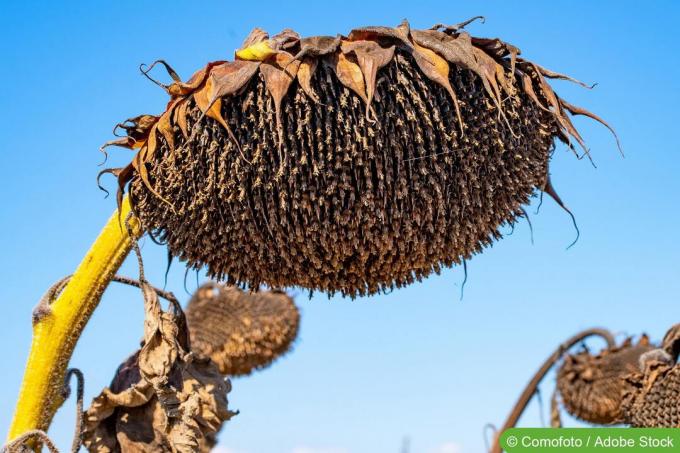
Should you cut off faded sunflowers?
Sunflowers bloom for a long time, but unfortunately not forever. Is it better to cut off the faded flowers or let nature take its course? Both are possible! It depends on the sunflower species and what you want to do with the ripening seeds. Read here whether you should cut off faded sunflowers.
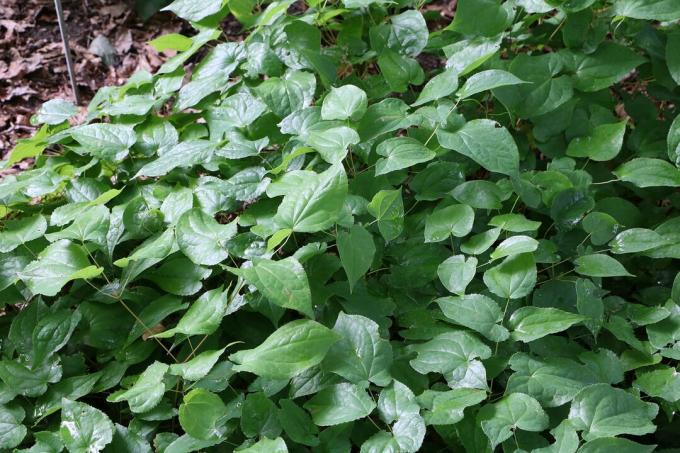
Elf Flower, Epimedium: 12 Tips for Grooming & Pruning
The elf flower transforms shady locations into a sea of flowers. Delicate flowers appear in white, yellow, pink, red or violet. The ground cover with the heart-shaped leaves is also decorative when not in bloom. We have put together the most important care tips for you.

Liver Balm, Ageratum: 10 tips for care
The leather balm is a daisy family that comes from Central and South America. In our latitudes, liver balm has been very popular for a long time, because here the plant does the trick not only a great figure as a gap filler between different perennials, but also in the form of one carpet of flowers.
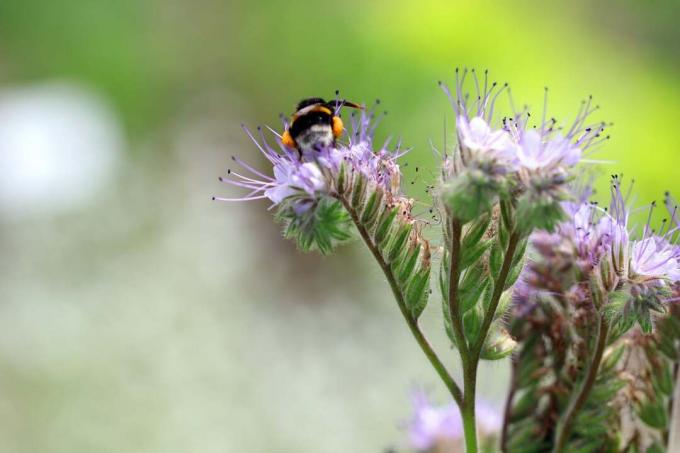
Bee friend, Phacelia: 8 tips for care
The cultivation of the tufted flower is not particularly difficult, because the plant turns out to be undemanding and easy to care for. If you take into account the basic requirements of this flowering perennial, you will benefit from its positive effects on biodiversity and soil conditions.
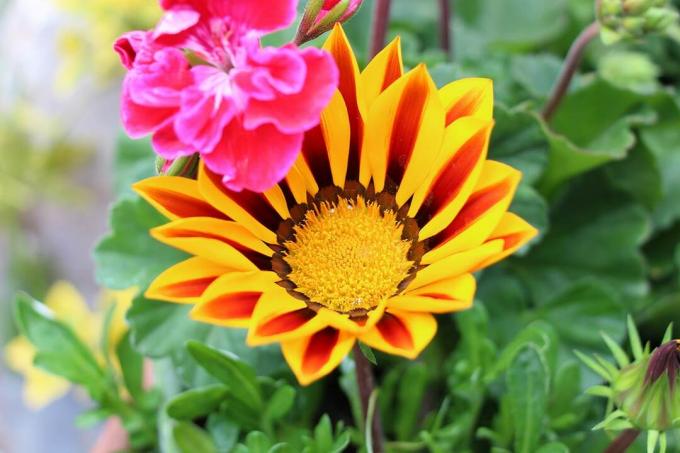
Is Gazania hardy? 6 tips for the winter
Gazania are commercially offered as annuals and not hardy. Hibernation works under ideal conditions, which require increased effort. Some varieties are considered hardy. The propagation of cuttings over the winter is an alternative to cultivating the plant perennial.

Loyal to men, lobelia: care instructions from A – Z
Loyal to men, also known as blue lobelia, flowers profusely all summer long with the right care. This beautiful bloom is encouraged by the right care. The blaze of color is not only beautiful to look at, the lobelia are also popular with various insects.
